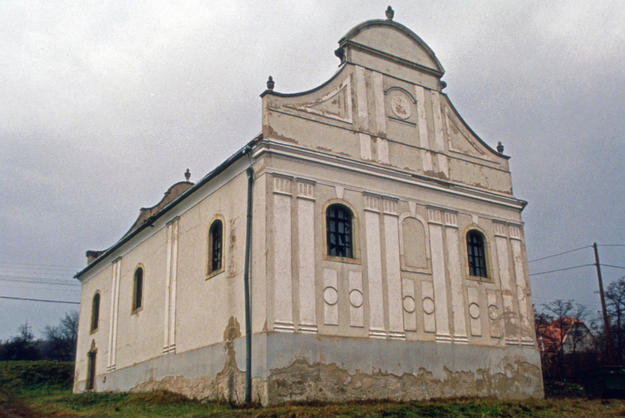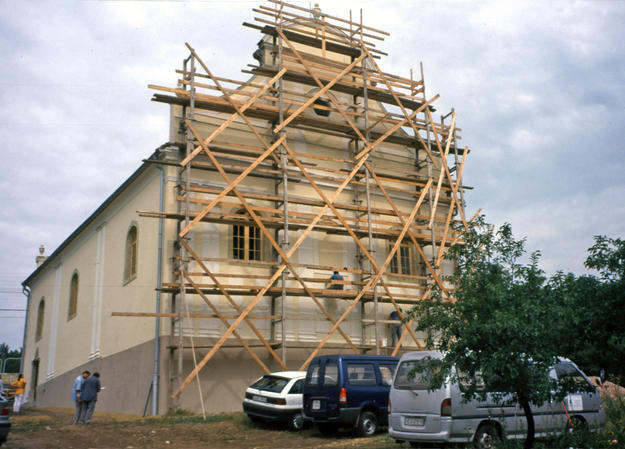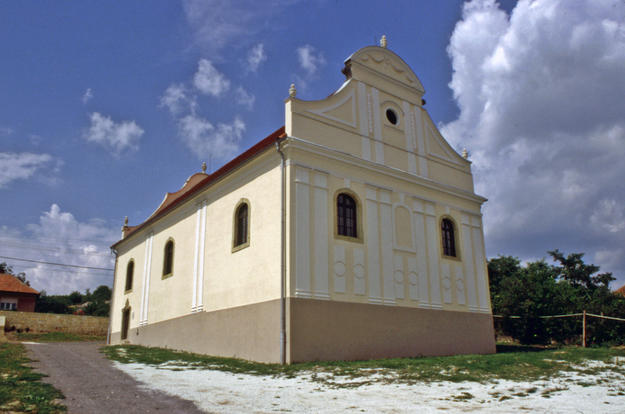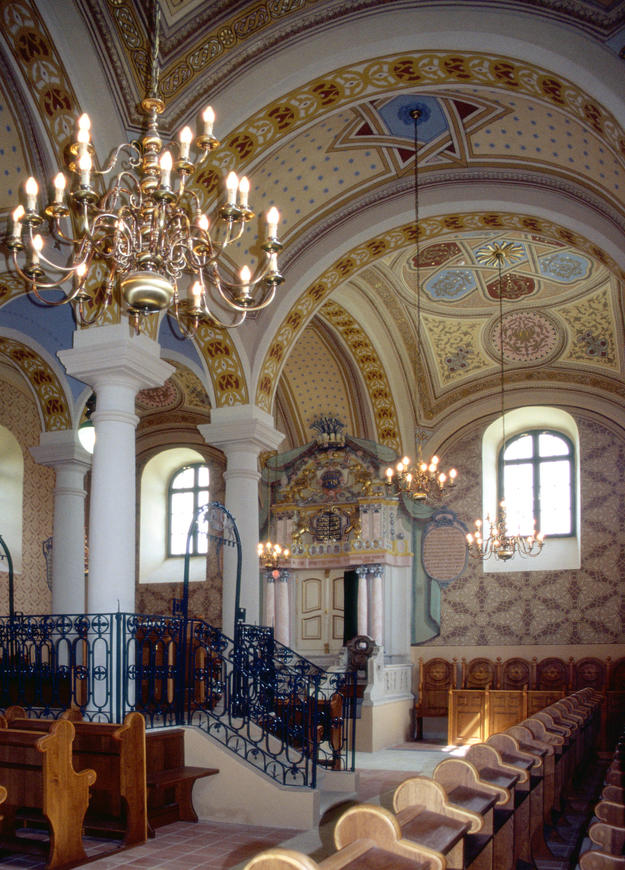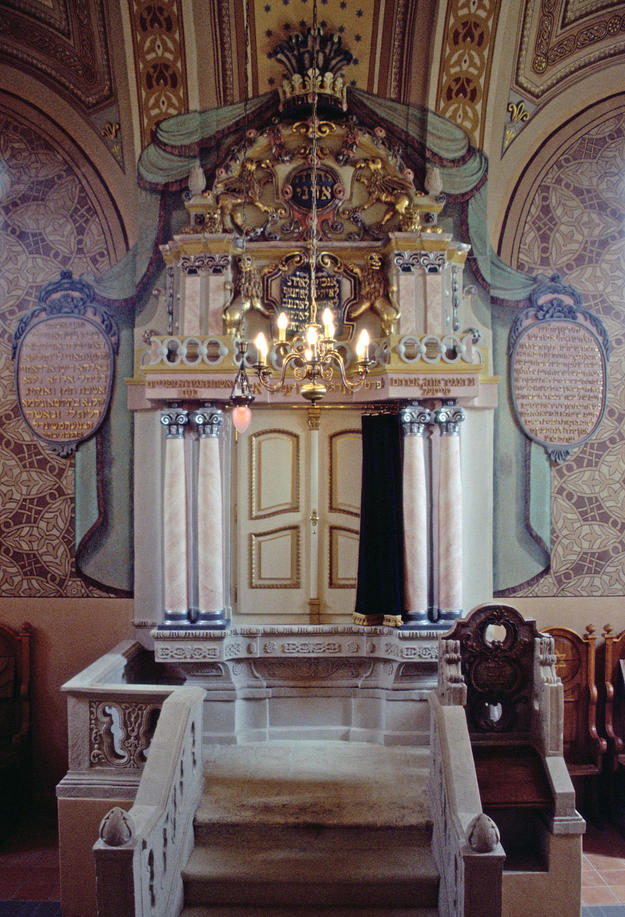Mád Synagogue
Mád Synagogue is a rare example of beautiful and now rare Hungarian synagogue architecture. Situated on a hill overlooking the majestic vineyards of the Tokaj Hegyalja region, it is one of the oldest surviving synagogues in Hungary. Built in 1795, the baroque structure sits between a Catholic Church and a Reformed Church, evidence of these sizable communities’ peaceful coexistence in this period. Mád Synagogue has a finely decorated interior with Polish-Lithuanian influences and a remarkable bimah, a platform from where the Torah is read aloud, with four columns that support the nine-sectioned vaulted space. Mád’s Jewish population began to flourish with the arrival of Polish and Ukrainian Jews in the 1720s. Rich Orthodox and Chassidic traditions were established, and members of the community produced and transported kosher wine from nearby vineyards. Religious ceremonies and services took place in the synagogue until Jewish residents of the region were deported, leaving the temple abandoned. The building became the property of the State Treasury Directorate in 1949.
The roof, walls, bimah, and Torah ark were conserved
In 2000, World Monuments Fund carried out surveys to analyze surviving materials and the conditions of the walls, the stucco decorations, the carved stones, and the plaster and paint of the significantly deteriorated structure. The roof, walls, bimah, and Torah ark were conserved after the completion of the study phase of the project. Research was conducted on the historical features of the temple’s façade, allowing for the accurate repair of damaged stucco decorations on the exterior. Broken doors and windows were replaced, and improved electric, heating, draining, and plumbing systems were installed. Local rabbis were consulted on the design and conservation of the interior furnishings and ritual objects. The project was completed in 2004 with a ceremony to commemorate the 60th anniversary of the Holocaust in Hungary. Few Holocaust survivors from Mád returned at the end of World War II. Those who perished in the war have been memorialized by plaques with names inscribed inside the synagogue. Today this building serves as a Holocaust memorial drawing many visitors, and a fine example of a unique architecture.

